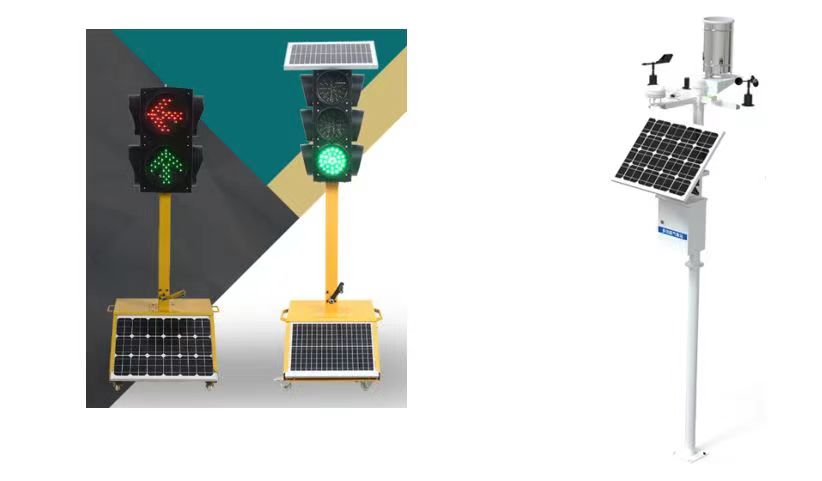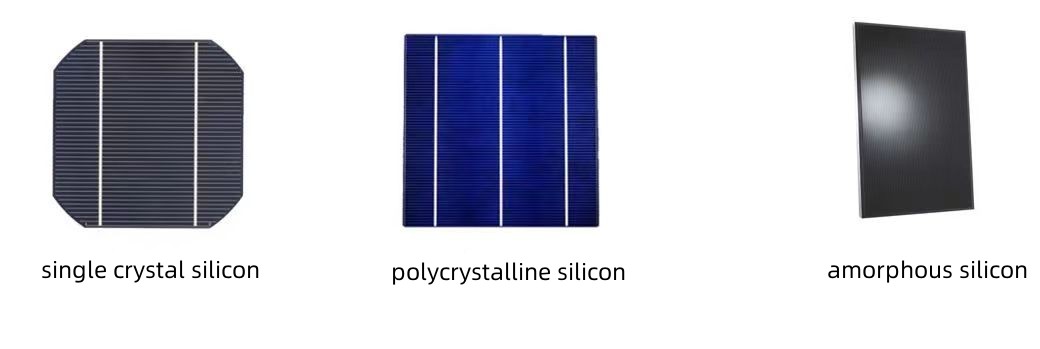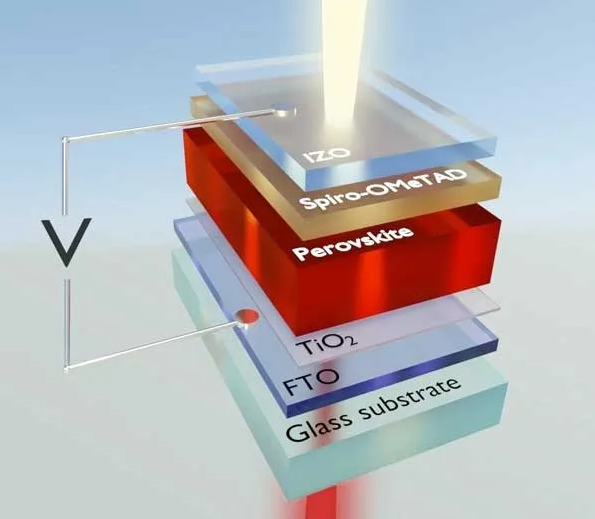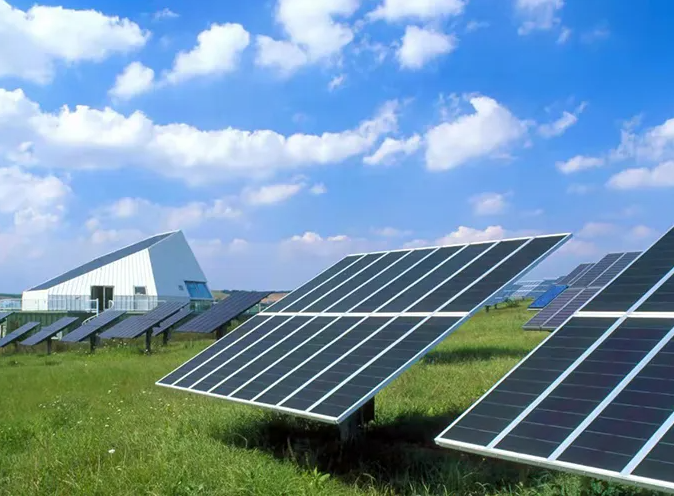A solar cell is a machine that converts light energy into electricity. Generally used in photovoltaic power stations, power supply is not convenient places. For example: solar street lamp, courtyard lighting, solar signal lamp, outdoor meteorological monitoring, geological monitoring, reservoir water monitoring, small base station, etc.

Solar cells currently mainly use silicon solar cells, which dominate the application.
Silicon solar cell is composed of a large area PN junction made of silicon semiconductor material through series and parallel connection. On the N-type material layer, the metal grid line is made as the contact electrode, and the metal film on the back is also pointed out as the contact electrode, so as to form the solar panel.
In order to decrease the emission loss of light, the surface is generally covered with an antireflection film. Mainly for monocrystalline silicon solar cells, polycrystalline silicon solar cells and amorphous silicon solar cells.
The single crystal silicon solar cell has the highest conversion efficiency, its experimental maximum conversion efficiency is 25%, the actual use conversion efficiency is about 18%, the service life of 15 to 25 years, high cost. It still occupies a dominant position in large-scale application and industrial production.
The conversion efficiency of polysilicon solar cells is slightly lower. The highest experimental conversion efficiency is 20%, and the actual conversion efficiency is about 15%. Service life is lower than the single crystal silicon, low cost. At present, many photovoltaic manufacturers have mass production of polysilicon.
Amorphous silicon solar cells have low cost, good low light effect, but low conversion efficiency less than 10%, a short service life, poor stability of the material is easy to cause photoelectric efficiency recession effect, affecting its actual use.

Solar cells are usually not used alone, need to be equipped with photovoltaic controller, battery to form a set of solar power.
Solar panels are at the heart part of the solar photovoltaic power system, which converts solar energy into electricity, usually using monocrystalline silicon or polycrystalline silicon panels. Because of its long service life (generally up to 20 years) and high photoelectric conversion efficiency, monocrystalline silicon cells are the most frequently used cells.
Photovoltaic controller is mainly to protect the battery, with overcharge and over release protection, power output control, charging trickle protection, temperature compensation and lightning protection and other functions.
When the solar panel charges the battery, if the battery voltage reaches the peak to continue charging at elevated voltage, it is easy to cause damage to the battery.
Nevertheless, if you stop charging at this time, the battery can not saturate. Therefore, the controller will reduce voltage immediately after charging to the peak voltage, and then enter the trickle-down charging state, which ensures that the battery can be stable in full state. Effective protection of the battery, so that its longer life.
Storage batteries, usually lithium or lead-acid batteries, store electricity converted from solar panels. Since the electricity produced by solar cells is direct current, if the electricity is given for the use of household appliances, it is necessary to install an inverter (DC to AC).
When light hits the semiconductor PN junction, the semiconductor PN junction absorbs light energy and generates an electromotive force at both ends.
This phenomenon is known as photovoltaic effect. Due to the strong built-up electric field in the depletion region of a PN junction, electrons and holes in the depletion region are generated and move in opposite directions to leave the depletion region under the action of the built-up electrostatic field.
As a result, the P-region potential increases and the N-region potential decreases, and the photosensitive electromotive force is formed at both ends of the PN junction, which is the photosensitive volt effect of the PN junction.
The service life of solar panels is given in the material. Silicon solar panels generally have a service life of 15 to 25 years. But with the influence of the environment, the materials of solar panels will age over time. In general, the power will be decay by 30% after 20 years, and 70% after 25 years.
Solar panels are only devices that convert light energy into electricity. They cannot store electricity. When light is dazzling, it can produce a higher electromotive force, and when light is weak, it can only produce a lower electromotive force.
The output voltage is expected to be very unstable and cannot supply power to the electrical equipment normally. Through the voltage conversion module, the unbalanced voltage generated by the solar power panel is transformed into the voltage suitable for charging the battery and charging the battery. Electrical equipment is from the battery to obtain a relatively stable supply voltage.

In this case, the power used by the load will preferentially be directly utilized by the solar cell, and the remainder will be charged to the battery. Instead, if the solar cell is low power, it will also draw power from the battery.
The efficiency of solar photovoltaic power generation is influenced by the amount of solar radiation. At higher latitudes, the sun's altitude Angle will be smaller, and the sun's radiation intensity will be weaker. At low latitudes, the sun's altitude Angle will be larger, so the sun's radiation intensity will be stronger, so solar power will be more efficient at low latitudes.
The higher the altitude, the thinner the air, the more transparent the atmosphere, and the stronger the sunlight's radiation to the ground. Therefore, the higher the altitude, the greater the solar radiation energy, which is more suitable for solar photovoltaic power generation.
Sunshine duration is another important factor affecting ground solar energy. Generally, the lingering sunshine time, the total amount of solar radiation obtained by the ground is more.
Solar outdoor equipment is usually made of monocrystalline silicon solar panels, which are foldable and easy to carry. However, the price is quite expensive. A solar panel with 20W power generation is about the price of 2-3 larger capacity charging banks.
Amorphous silicon solar cells can generate electricity under indoor lights, but their output is much smaller than standard conditions. It is generally used for small electronic products used indoors or in low light intensity environments, such as calculators, electronic watches, rockers, electronic scales, electronic speedometers, car alarm devices, etc.

From the appearance, the four corners of the monocrystalline silicon cell show an arc shape, without surface pattern. The four corners of the polysilicon cell are square, and the surface is under a pattern similar to ice flowers. Amorphous silicon cells are also known as thin film components. Unlike crystalline silicon cells, the grid lines can be viewed. The surface is as bright and smooth as a mirror.